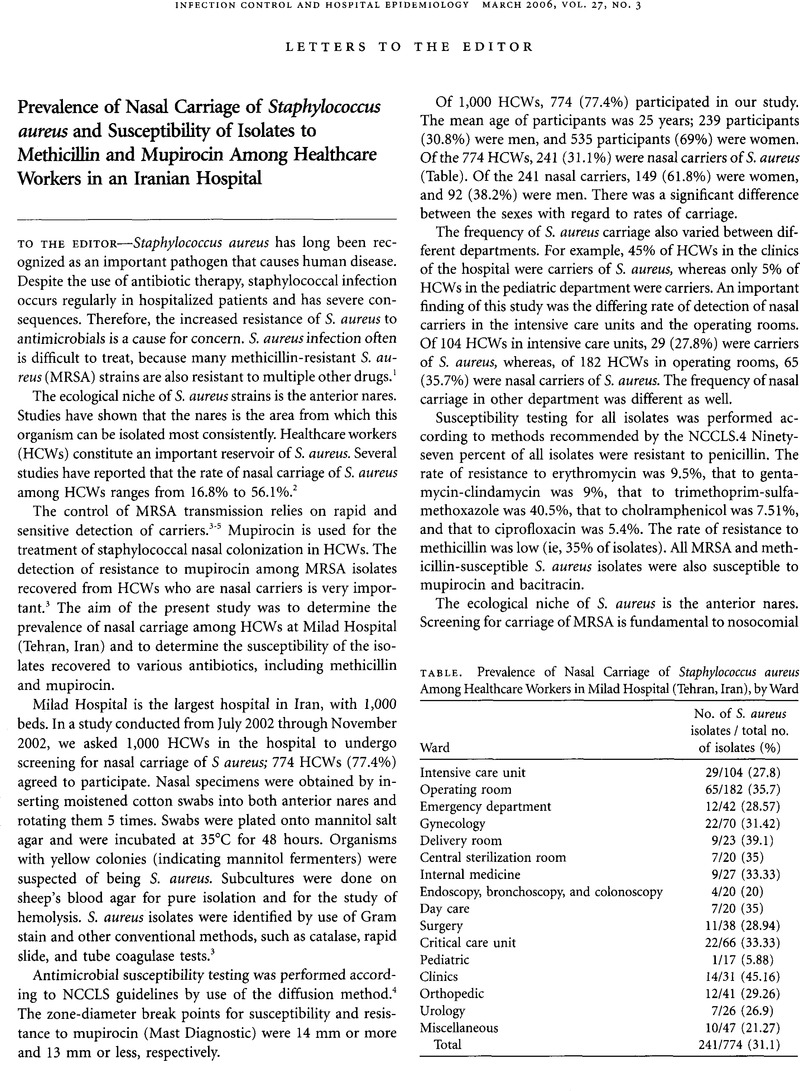Crossref Citations
This article has been cited by the following publications. This list is generated based on data provided by Crossref.
Silva, Eduardo Caetano Brandão Ferreira da
Maciel, Maria Amélia Vieira
Melo, Fábio Lopes de
Lopes, Ana Catarina de Souza
and
Aca, Ivanize da Silva
2010.
Vigilância epidemiológica e susceptibilidade de Staphylococcus aureus em profissionais de saúde de um hospital de referência: Uma avaliação inicial.
Revista do Instituto Adolfo Lutz,
Vol. 69,
Issue. 1,
p.
126.
Boroumand, Mohammad Ali
Anvari, Maryam Sotoudeh
Pourgholi, Leila
Shoar, Saeed
Naderan, Mohammad
Amelimojarad, Elham
and
Goodarzynejad, Hamidreza
2011.
Local factors affecting cost/benefit of methicillin-resistant Staphylococcus aureus screening, a study from a low-income country.
American Journal of Infection Control,
Vol. 39,
Issue. 8,
p.
703.
Hall, Ian M.
Barrass, Iain
Leach, Steve
Pittet, Didier
and
Hugonnet, Stéphane
2012.
Transmission dynamics of methicillin-resistant
Staphylococcus aureus
in a medical intensive care unit
.
Journal of The Royal Society Interface,
Vol. 9,
Issue. 75,
p.
2639.
Abbasi-Montazeri, Effat
Khosravi, Azar Dokht
Feizabadi, Mohammad Mehdi
Goodarzi, Hamed
Khoramrooz, Seyed Sajjad
Mirzaii, Mehdi
Kalantar, Enayatollah
and
Darban-Sarokhalil, Davood
2013.
The prevalence of methicillin resistant Staphylococcus aureus (MRSA) isolates with high-level mupirocin resistance from patients and personnel in a burn center.
Burns,
Vol. 39,
Issue. 4,
p.
650.
Nazemsadati, SS
Allami, A
and
Haj Manoochehri, F
2018.
Staphylococcus aureus colonization in Qazvin University hospitals healthcare workers.
The Journal of Qazvin University of Medical Sciences ,
Vol. 22,
Issue. 2,
p.
8.
Mir, Mina
Kordi, Jalileh
Ghalehnoo, Zahra Rashki
Tadjrobehkar, Omid
and
Vaez, Hamid
2019.
Nasal Carriage and Antibiotic Resistance Pattern of Methicillin-Resistant Staphylococcus aureus Isolates from Clinical Staff of a Referral Hospital, Zabol, Iran.
International Journal of Basic Science in Medicine,
Vol. 4,
Issue. 2,
p.
81.



